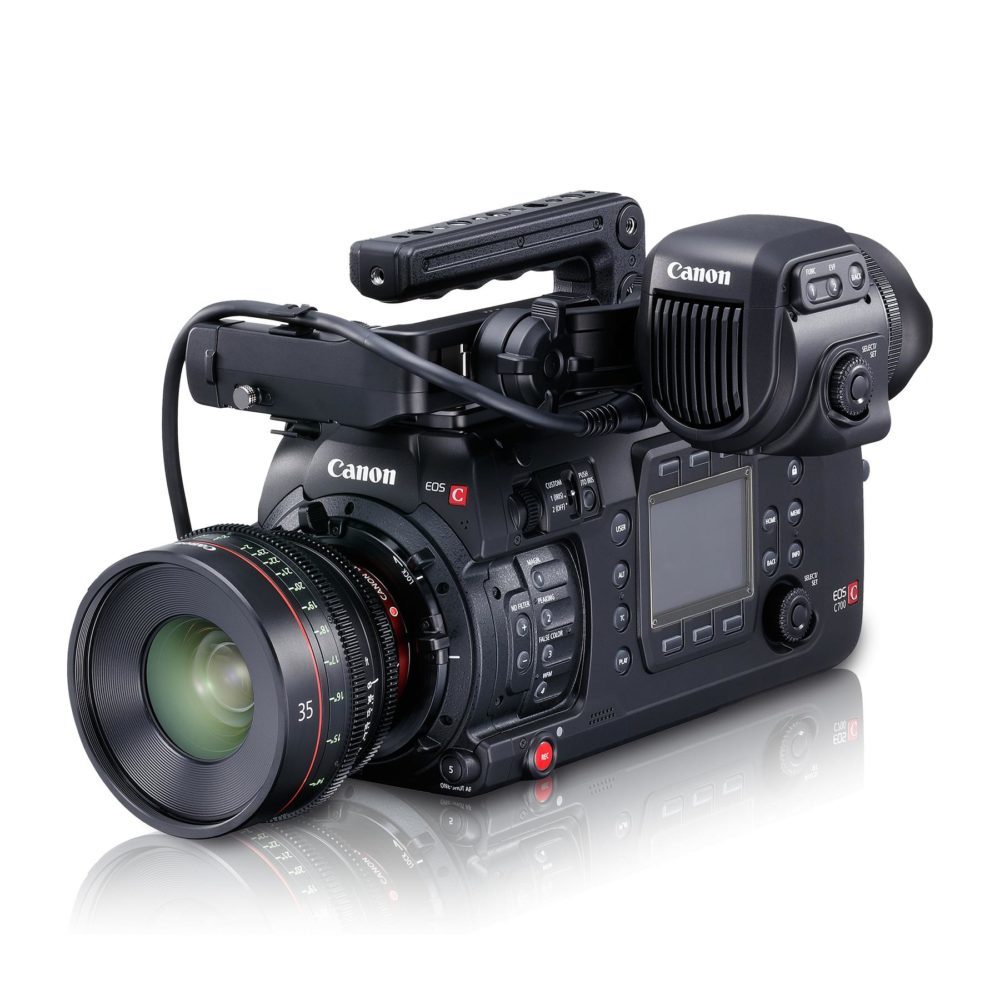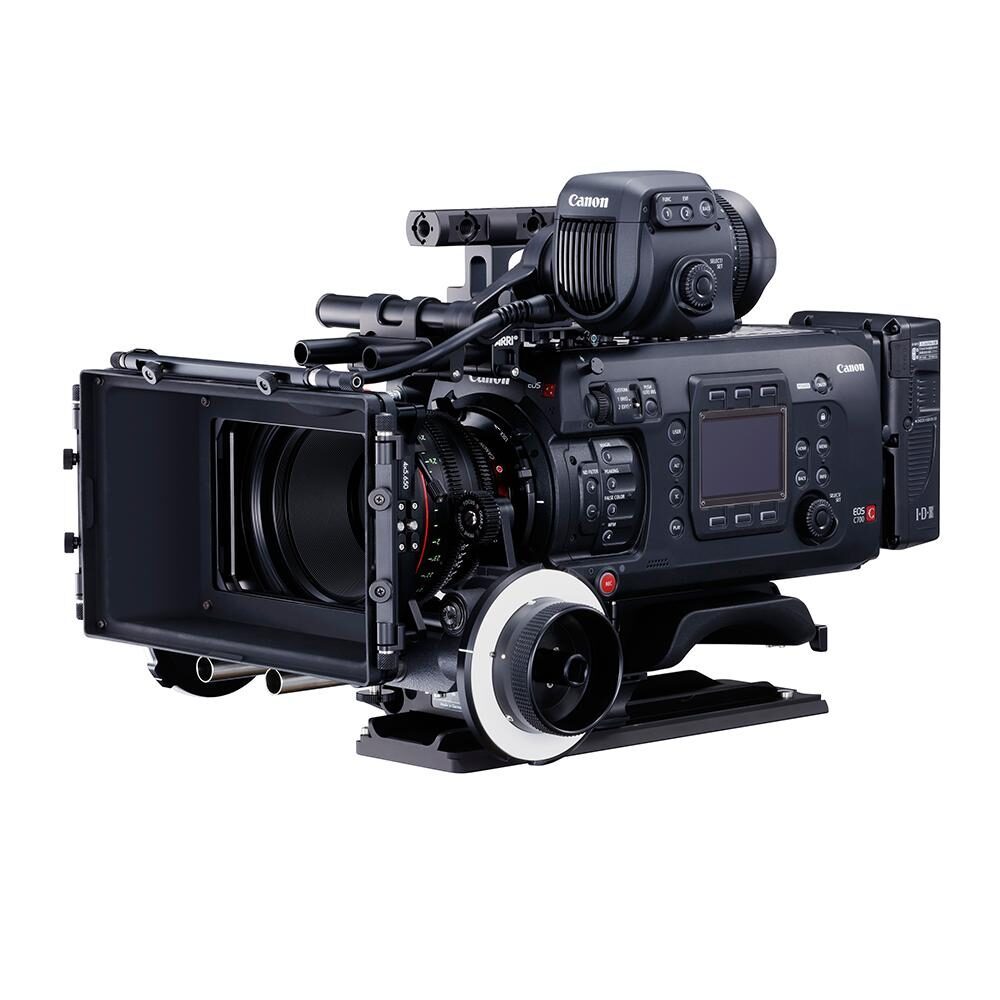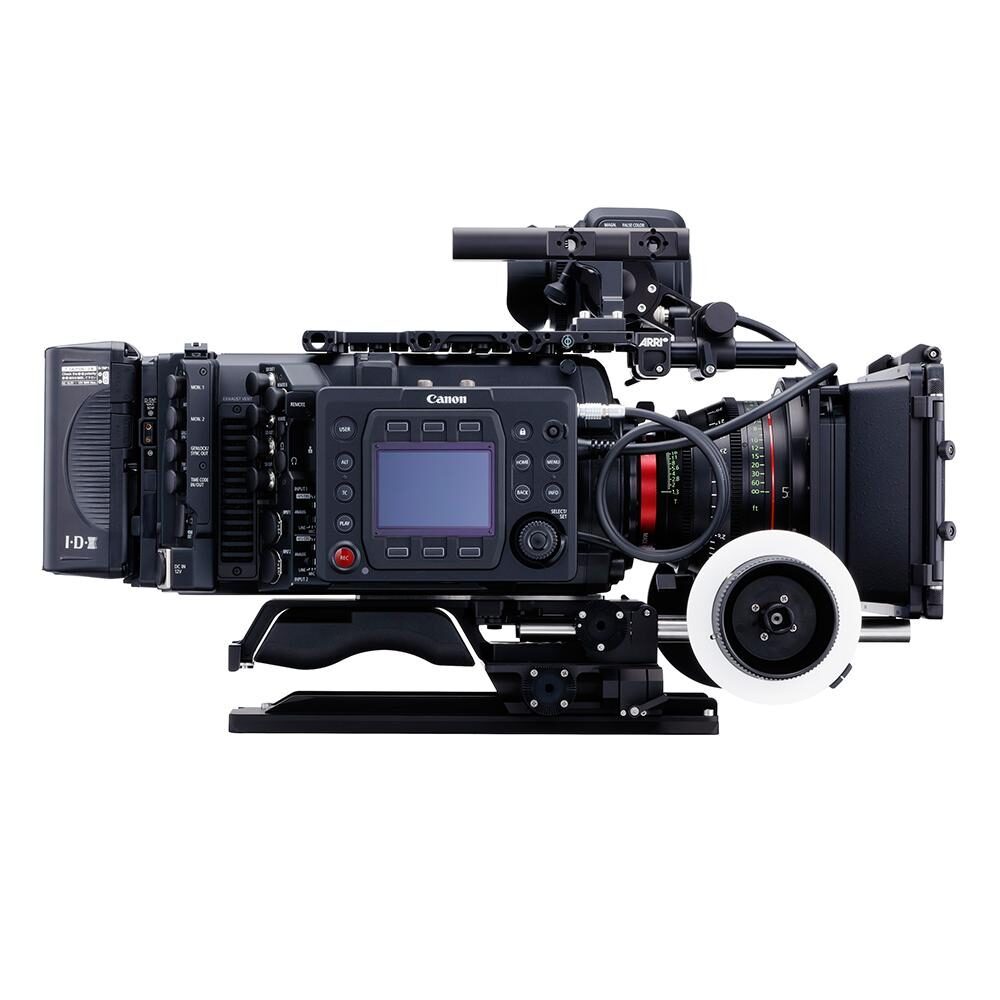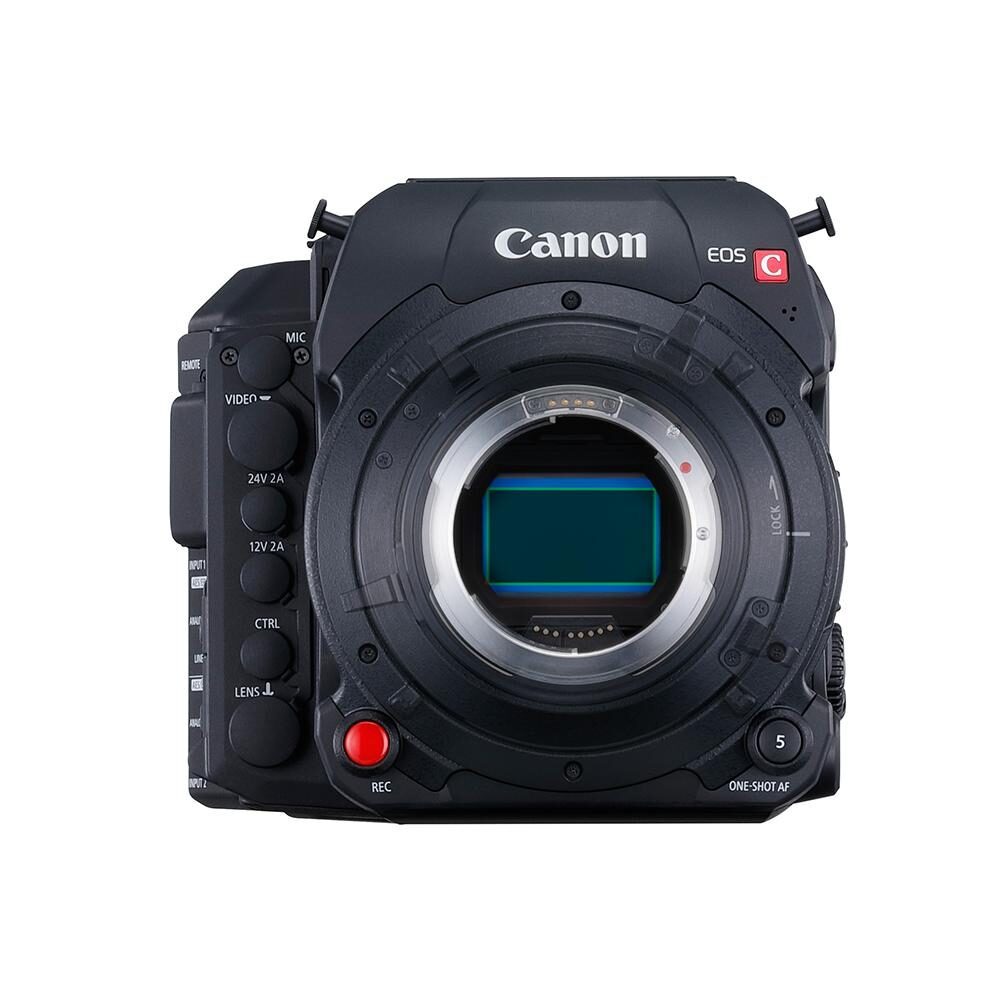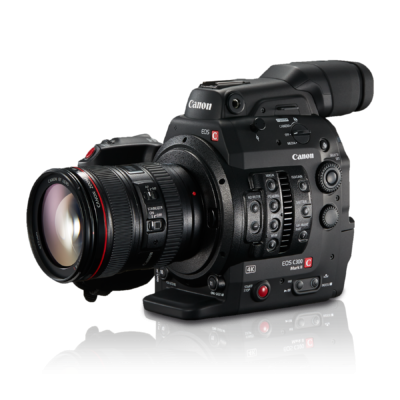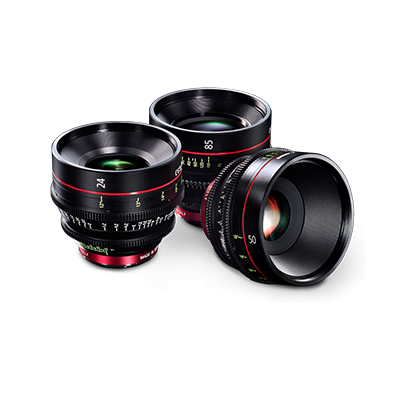EOS C700 FF
The flagship - now with full-frame
Canon’s new EOS C700 FF top-end digital cinema camera features a full frame CMOS sensor designed to meet an extensive range of production needs. The camera’s full frame sensor provides higher resolution and produce footage with shallower depth of field than Canon cameras with Super 35 sized sensors, giving filmmakers a variety of creative options.
The EOS C700 FF is available in EF and PL mount options.
From: $42,899*
*For EF and PL Mount models. Prices and specifications subject to change without notice. Actual prices are determined by individual dealers and may vary.
Features
New 5.9K Full Frame CMOS Sensor
The EOS C700 FF Digital Cinema Camera offers a new full frame 5.9K CMOS sensor (38.1 x 20.1mm) with a 17:9 aspect ratio. In addition to full frame lenses, the camera can also be used with conventional Super 35mm lenses, and supports both anamorphic and spherical lenses. The sensor is capable of capturing footage in a wide variety of aspect ratios.
The new sensor also offers exceptional low noise, as well as broad-ranging tonality that exceed 15 stops of dynamic range with a wide colour gamut. This helps the EOS C700 FF achieve more natural skin tones and a greater freedom in grading, expanding the possibilities for visual expression and offering outstanding effectiveness in HDR video production. The EF mount version of the camera also features Canon's Dual Pixel CMOS AF Technology.
Modular Design for Versatile Shooting Configurations
The EOS C700 FF Digital Cinema Camera features a modular design which allows for a wide range of shooting applications, supporting a variety of workflows. The EOS C700 FF is a full size cinema camera allowing for both traditional studio style and handheld configurations.
The camera body includes built in cheese plates with numerous 3/8-16 and 1/4-20 threaded holes on the top and bottom to easily attach accessories. The top handle attaches in a variety of positions in order to achieve optimum balance.
Multiple Recording Formats
The EOS C700 FF features a wide range of options to fit your particular workflow. With an optional Codex Recorder CDX-36150 attached, the EOS C700 FF can record 5.9K RGB Bayer RAW up to 60 fps, 4K RAW (Super 35mm crop) up to 72fps and 2K RAW (Super 16mm crop) up to 168 fps. ProRes and XF-AVC recording to CFast™ cards is also available, as is XF-AVC (Proxy) recording.
RAW Recording:
With an optional Codex CDX-36150 Recorder attached, the EOS C700 FF can record 5.9K RGB Bayer RAW up to 60 fps, 4K RAW (Super 35mm crop) up to 72fps, and 2K RAW (Super 16mm crop) up to 168 fps.
Controlled directly through the cameras menu system, the Codex CDX-36150 is attached to the EOS C700 FF by removing the battery plate at the rear of the EOS C700 FF and replacing it with the recorder. This modularity of the EOS C700 FF allows the recorder to be connected securely without wires and act like an integrated part rather than an external accessory. The rear of the Codex recorder has a battery plate with onboard Gold Mount battery connector. External power (10-32 VDC) can also be supplied to the 2-pin connector on the recorder body.
The Codex Recorder allows recording not only 5.9K RAW, but also ProRes at significantly higher frame rates than internal CFast Cards. When recording, RAW files are saved as a .RMF frame sequence in an uncompressed format with no "baked in settings." Clip development can then be easily adjusted in post using the downloadable Canon Raw Development (CRD) software.
The CDX-36150 uses one Codex Capture Drive 2.0 (1 TB or 2 TB capacity), a familiar and commonly available professional recording media.
ProRes Recording:
The EOS C700 FF records Apple ProRes to CFast media and the optional Codex CDX-36150 Recorder. ProRes recording can help significantly reduce the time and cost of transcoding video files for delivery. Simultaneous dual CFast recording in ProRes is possible for creating an immediate backup.
Canon XF-AVC Recording:
The EOS C700 FF can record XF-AVC to two CFast 2.0 card slots on the camera right side of the camera. XF-AVC and ProRes formats (along with metadata) can be simultaneously recorded to either or both CFast cards. Simultaneous recording is helpful, for example, where one card might go to the post house and the other could be stored safely in the production company's archive.
Relay recording is also possible for situations where changing cards and losing precious seconds is not an option, such as live events, nature and documentaries.
Canon XF-AVC (Proxy) Recording:
An 8-bit 4:2:0 Proxy XF-AVC file can be recorded to an SD card for immediate editing. The SD card can also capture JPEG still frames (2048x1080 or 1920x1080), metadata, menus and other information.
5.9K Oversampling for 4K
The EOS C700 FF Digital Cinema Camera uses a high-quality debayering algorithm when over sampling 5.9K in 4K/UHD recording to suppress moiré and improve noise graininess, resulting in high quality video.
Canon Log 2 and 3
The EOS C700 FF Digital Cinema Camera supports Canon Log 2 and Canon Log 3 Gamma. Canon Log is designed to reproduce, in post-production, the entire tonal range that the CMOS image sensor is capable of. Log workflows provide the user with higher dynamic range, more highlight and shadow retention, and more flexibility in grading. Canon Log 2 provides the largest dynamic range and image detail. While Canon Log 2 provides the most post-production flexibility and the full 15 stops of dynamic range of the sensor, it requires more post time. For users looking for most of the benefits of log workflow, but with shorter turnaround times, Canon Log 3 provides an alternative with only a slightly reduced dynamic range of 14 stops.
SMPTE ITU-R BT.2100 Support for PQ/HLG Standard
The EOS C700 FF Digital Cinema Camera features the option to output HDR formats conforming to ITU-R BT.2100 over the monitor input, to assist in HDR production. ITU-R BT.2100 allows compatible monitors to simulate the HDR look of the final piece allowing for easier lighting and other technical decisions on set during the acquisition process.
The optional Canon Electronic Viewfinder (EVF-V70) also allows for an ITU-R BT.2100 simulation mode to allow the camera operator to see HDR visuals close to what is supplied on the monitor signal. This can further facilitate creative decisions on set where HDR reference equipment and output devices might not be available.
User LUT Support
The EOS C700 FF Digital Cinema Camera supports User LUTs. Users can customize their own LUTs and load them on the camera for viewing and recording.
ACES Support
The EOS C700 FF Digital Cinema Camera supports ACES 1.0 of the Academy Colour Encoding System. Using Canon supplied IDTs, images captured on the EOS C700 FF can be imported directly into the ACES compatible systems.
Additionally, video output from the camera can be monitored by selecting the ACES Proxy. Aces Proxy allows the camera to send a monitor output that simulates ACES space to a compatible monitor or device. Modifications made using the proxy output can be saved and later brought into the editing or grading suite to help insure changes and colour choices made on set are accurately reproduced in post.
Canon 17, 24 and 30-inch Reference Displays support ACES image display. The EOS C700 FF has four 3G-SDI outputs at the rear of the camera. So, while the Codex CDX-36150 records 5.9K RAW, the EOS C700 FF can simultaneously send the 5.9K image to a Canon Reference Display. The display debayers the RAW image and converts it to an ACES colour space and apply an appropriate LUT. In addition to ACES, Canon's DP-2420 and DP-V2411 Reference Displays support HDR, Canon Log3 and Hybrid Log Gamma.
Dual Pixel CMOS AF
The EOS C700 FF Digital Cinema Camera features next generation Dual Pixel CMOS AF (DAF) Technology. Each pixel in the camera's CMOS sensor is configured with two photodiodes.
Two independent image signals can then be detected at each photosite. By implementing phase-difference AF, smooth focusing is accomplished using Canon EF lenses with much higher speed and accuracy than was possible with previous technologies.
The EOS C700 FF has rapid one-touch AF (with a push-button) and continuous AF within approximately 80% of the overall image area. Face detection AF is another autofocus mode that can track a person's face in the frame and maintain focus on them. To further fine tune AF performance, the EOS C700 FF offers the ability to set the AF tracking speed and response.
DAF also makes possible the Dual Pixel Focus Guide. Dual Pixel Focus Guide presents the user with a rectangle in the center of the EVF or monitor. The rectangle turns green when the subject is in focus. If the subject is out of focus the box will turn gray and the arrows will indicate which way to adjust the lens to regain focus.
A focus pre-set feature allows separate predetermined focus points to be selected, and when the SET button is pushed, the lens will move focus from one mark to the other.
Triple DIGIC DV 5 Image Processors
"DiG!C" is Canon's acronym for Digital Imaging Integrated Circuit. The EOS C700 FF Digital Cinema Camera uses three DiG!C DV 5 image processors to power the advanced features of the camera. DiG!C works in conjunction with other subsystems of the camera such as the lens and sensor, to support the various features and the image processing engine.
Internal ND Filters
The EOS C700 FF features in-camera ND filters to help save production time and help increase shooting versatility without the need to change filters. The internal ND filters are selected with the ND FILTER + and - buttons on the left side of the camera. The camera uses an internal, all glass motorized ND unit. This combination of ND filters allows 2, 4 and 6 stops of ND in normal mode and 8 and 10 stops in extended mode.
Anamorphic Lens Support
The EOS C700 FF supports anamorphic format lenses by electronically desqueezing the image in the viewfinder and on connected monitors for viewing. On the sensor users can take advantage of the camera's full 5.9K resolution by using 1.3x squeeze anamorphic lenses that cover the full 16x9 area of the EOS C700 FF sensor. Popular 2x squeeze anamorphic lenses that cover a native 1.2:1 aspect ratio on the sensor can be used as well using a 4:3 cropped area of the sensor.
Intelligent Metadata / I
Intelligent Metadata is Cooke Optics' open source technology of using encoders within the lens and contacts on the camera to display and record metadata with focus, iris, focal length, serial number and other helpful lens information. The EOS C700 FF PL is fitted with /i contacts. The metadata can be helpful on set to display lens information on monitors. Camera assistants can see an immediate graphic representation of depth of field. Script supervisors can get instant updates of lens, focal length, distance and aperture. /i Technology is used in VFX work for matching moves and determining lens parameters.
B4 Lenses
Two B4 mount adapters are available for the EOS C700 FF, B4 to EF adapter (MO-4E) and B4 to PL adapter (MO-4P). Canon's B4 mount adapter blows up the image slightly, resizing the 2/3” image circle to approximately 1” to correspond with native HD resolution on the EOS C700 FF sensor. This design helps minimize light loss through the adapter, while maintaining depth of field and range of the 2/3” lens. For power and control with B4 servo lenses the C700 FF features a 12-pin lens connector on the front of the camera body.
Slow and Fast Motion Recording
In addition to the 5.9K RAW 60P, the EOS C700 FF also features 4K (crop) recording up to 72 frames per second and a 2K (crop) mode featuring up to 168 frames per second.
IP Streaming*
IP Streaming enables users to send their video online, in real time, as they shoot. It works with compatible IP decoders, IP streaming software and other devices for live streaming to video websites, news shows, video productions, post production facilities, editing rooms and broadcast stations. The EOS C700 FF supports MPEG2-TS with UDP, RTP, RTSP+RTP protocols.
*IP streaming is not supported during 5.9K shooting. IP streaming is enabled only when camera mode is set to system frequency 59.94 / 50.00 (Hz), YCC, 16:9 (UHD / FHD (HD)).
Wireless Remote Capabilities
The EOS C700 FF can connect to a wireless network using a Canon wireless file transmitter (WFT-E6/WFT-E8). Using the WFT Transmitter, users can operate the camera and view live images using a Wi-Fi® connected device with a compatible web browser.
GPS
When an optional Canon GP-E1 GPS receiver is connected to the EOS C700 FF, GPS information can be added to the metadata. This is selected using the menu. GPS position (altitude, latitude, longitude) and time can be recorded where GPS service is available.
RC-V100 Support
Canon's RC-V100 Remote Controller plugs into the EOS C700 FF via an RS422 connector on the rear panel. This optional accessory allows image quality adjustments and camera operations to be set from a distance.
Other Accessories
OLED Electronic Viewfinder EVF-V70, Remote Controller RC-V100, Shoulder Support Unit SU-15, Remote Operation Unit OU-700, Shoulder-Style Grip Unit SG-1, GPS GP-E1, Wireless File Transmitters WFT-E6/WFT-E8.
Get a Quote
Canon Canada Inc. 8000 Mississauga Road, Brampton, Ontario, L6Y 5Z7 1-905-863-8000

